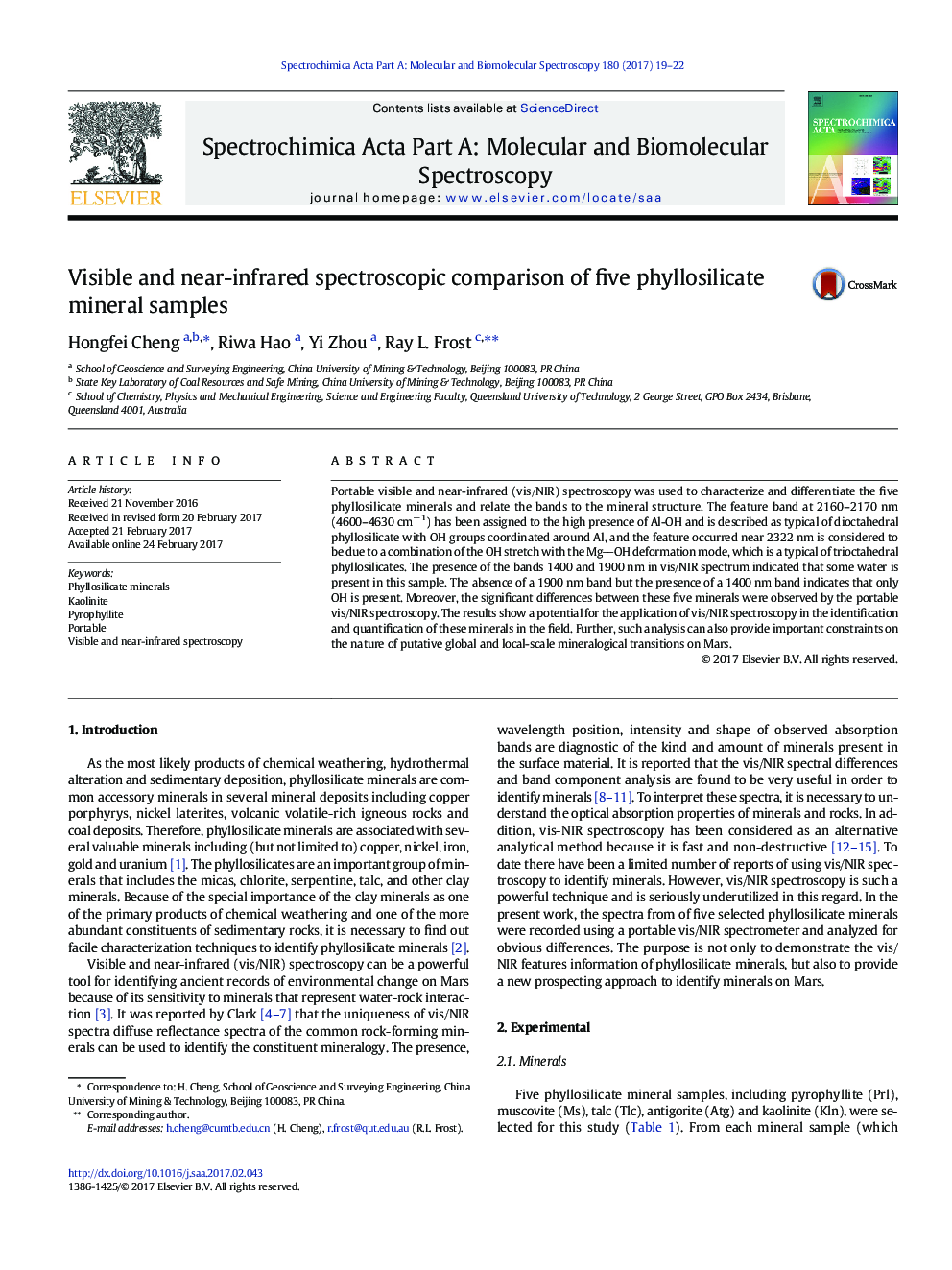| Article ID | Journal | Published Year | Pages | File Type |
|---|---|---|---|---|
| 5139597 | Spectrochimica Acta Part A: Molecular and Biomolecular Spectroscopy | 2017 | 4 Pages |
â¢Portable visible and near-infrared spectroscopy was used to differentiate the minerals.â¢The significant differences between the five phyllosilicate minerals were observed.â¢The application of vis/NIR spectroscopy in the identification and quantification of these mineralsâ¢A simple and user friendly technique can be used to identify and quantify minerals.
Portable visible and near-infrared (vis/NIR) spectroscopy was used to characterize and differentiate the five phyllosilicate minerals and relate the bands to the mineral structure. The feature band at 2160-2170 nm (4600-4630 cmâ 1) has been assigned to the high presence of Al-OH and is described as typical of dioctahedral phyllosilicate with OH groups coordinated around Al, and the feature occurred near 2322 nm is considered to be due to a combination of the OH stretch with the MgOH deformation mode, which is a typical of trioctahedral phyllosilicates. The presence of the bands 1400 and 1900 nm in vis/NIR spectrum indicated that some water is present in this sample. The absence of a 1900 nm band but the presence of a 1400 nm band indicates that only OH is present. Moreover, the significant differences between these five minerals were observed by the portable vis/NIR spectroscopy. The results show a potential for the application of vis/NIR spectroscopy in the identification and quantification of these minerals in the field. Further, such analysis can also provide important constraints on the nature of putative global and local-scale mineralogical transitions on Mars.
Graphical AbstractDownload high-res image (28KB)Download full-size image
